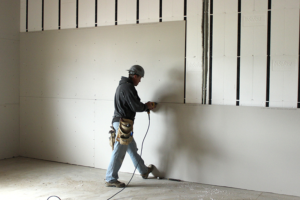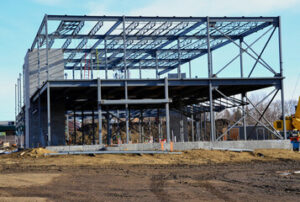Pest Control Springfield MO, eliminates dangerous animals that can spread diseases to you and your family. Pest control also protects your property value and safety.
Physical pest control includes trapping and removing the pests and eliminating their breeding grounds. It can also include modifying the environment, such as reducing stagnant water and limiting dark and damp places.

Pests are more than a nuisance; they can cause property damage, contaminate food, and transmit dangerous germs and diseases. They can also be a health hazard, causing allergic reactions and breathing problems. Pests invade homes and commercial properties to obtain food, water, or shelter. They carry with them disease-causing microorganisms and can gnaw wires, which creates fire hazards and poses safety risks for residents.
Prevention is the most effective strategy for pest control. It involves removing the attraction for pests by removing their sources of food, water and shelter. This includes storing foods in sealed containers, regularly emptying trash cans and keeping them from becoming overflowing, removing bird feeders and baths from the property, and keeping lawns, flower gardens and bushes trimmed.
Some preventative strategies are relatively simple, such as keeping doors and windows shut and using screens on exterior windows and doors. Routine cleaning, including wiping down counters and sweeping floors, can discourage pests from invading.
Cracks and gaps in walls, floors, and foundations are a common entry point for pests. They can be easily eliminated by performing regular inspections of the property and repairing any cracks or gaps as they are found. In addition, wood piles should be kept away from the home, and shrubs and trees should be trimmed so that they do not touch the roof line or overhang.
Water is also a attractant for pests, so it is important to drain standing water and regularly check gutters and drainage systems to eliminate leaky or blocked pipes and drains. Indoors, humidity can also be a draw for pests. It can be reduced by keeping rooms well ventilated and utilizing dehumidifiers or air conditioning where possible.
Pest infestations are a major problem for many Bronx homeowners, but prompt and effective pest solutions can help to mitigate their impact. Pests are more than just annoying; they can threaten the health and safety of family members and pets. Pests may also cause property damage, and if left untreated can result in expensive repairs. Pests can also spread harmful bacteria and viruses, such as hantavirus, leptospirosis and Salmonella, that can make people sick.
Suppression
Pests cause damage to property and also contaminate food. Pests such as cockroaches, fleas, and ants can carry diseases that are dangerous to people and pets. They can also cause fire hazards and spread moisture that can cause wood damage and corrosion. Pest infestations are difficult to eradicate and can often require professional intervention. Pest control methods may include exclusion, quarantine, repulsion, physical removal and chemical treatment.
Pest control is most successful when prevention measures are taken. Keeping trash bins closed, removing overripe fruit and vegetables, and sealing cracks and crevices in the walls and foundation can help reduce pest problems. A regular maintenance program is also essential.
An Integrated Pest Management (IPM) plan begins with a thorough evaluation of the pest problem and its cause. Considerations are given to the life cycle, potential damage, natural enemies, and effects of weather on pests before the use of any control tactics.
The first step is usually to introduce beneficial organisms. Bacillus thuringiensis kurstaki, for example, kills caterpillars by attacking their midguts. This biological control is safe for humans and mammals and can be used to manage more than 400 different insect species.
Chemical options such as herbicides to kill weeds and insecticides to kill pests are generally used only after prevention methods have failed or as a last resort. When pesticides are used, care is taken to ensure they are applied according to the label instructions and safety warnings. It is important that any chemicals used to manage pests are not absorbed into the groundwater supply or used in ways that can affect human health.
Pests can be a problem in homes, offices, apartment complexes and other types of buildings. Pest infestations are not only unsightly but can lead to structural damage, food contamination and loss of revenue. Pest control services are available to prevent and treat pest problems in commercial and residential properties.
Detection
Whether the pests are insects, weeds, diseases, or microbes, accurate identification is essential to developing an effective control strategy. In agriculture, identifying pests based on damage patterns allows farmers to focus their efforts on preventing or controlling pest populations that cause unacceptable harm to crops.
For homeowners, identifying signs of pests, such as droppings, egg sacs or fecal matter can help prevent infestations. Scouting and monitoring can be done routinely — from daily to weekly, depending on the environment. Look under leaves, along a foundation or at bait stations to spot pests before they become widespread problems.
In some cases, pests are unavoidable and treatment becomes necessary. In these situations, the goal is to reduce the pest population to an acceptable level as quickly and safely as possible using a combination of suppression and prevention strategies. This approach may involve the use of chemical controls.
Detection technologies are designed to help pest professionals quickly identify and respond to infestations. For example, Slovenian company Trapview has developed a pheromone trap that photographs the insects it catches to provide real-time alerts, allowing pest management teams to react quickly and accurately. Other systems, such as Rentokil’s PestConnect, use sensors and cameras to monitor environments for pests in real time and issue alerts that can be responded to remotely.
Pest detection can also be accomplished by examining a crop for unusual signs of pests, such as chewed leaves, holes or trails on the surface of a plant. This can be followed up by a visual survey and inspection of traps to identify the type of pest and determine how severe an infestation is.
Other pest detection methods can be used to support Merced County’s second line of defense against exotic pests and supports pest free status required by other states and countries that receive our products. For example, visual surveys and pheromone traps are conducted in orchards and apiary yards that have bees shipped to them from other states; roadside rights-of-way for weed and insect infestations; and agricultural production areas for exotic weeds and invasive species.
Eradication
The word eradicate means “to pull up by the roots,” but it also carries the connotation of “destroy completely, uproot, extirpate.” It is an appropriate name for a pest control strategy that eliminates a problem without leaving any survivors. It is most often used for invasive species that threaten agricultural or natural resources, but it can be applied to other types of pests as well.
Eradication strategies usually involve a combination of biological, physical and chemical control techniques. Biological methods can include using natural enemies or genetically engineered resistant varieties. Physical controls can include sealing cracks, gaps and openings in walls and foundations. It can also mean removing food, water and shelter from the site.
Using information about the pest, its biology and environment, a manager can decide whether to tolerate, control or eradicate the pest. Monitoring allows managers to make informed decisions based on the best available knowledge, and it can help identify problems before they become out of hand.
In addition to microbial pesticides, some companies use ad hoc treatments such as spraying and trapping. Using multiple strategies can make it more difficult for pests to adapt and survive.
If you are dealing with a pest infestation, ask potential pest control providers about their treatment methods. Look for one with a service guarantee and a commitment to environmentally friendly practices. For example, Truly Nolen has more than 85 years of experience and boasts overwhelmingly positive ratings on Google Reviews, TrustPilot and the Better Business Bureau. Its comprehensive preventive treatments cover a wide variety of standard pests, plus bed bugs. Another popular option is Ehrlich Pest Control, which has just under a century of experience and boasts perfect ratings on Google Reviews and TrustPilot.







